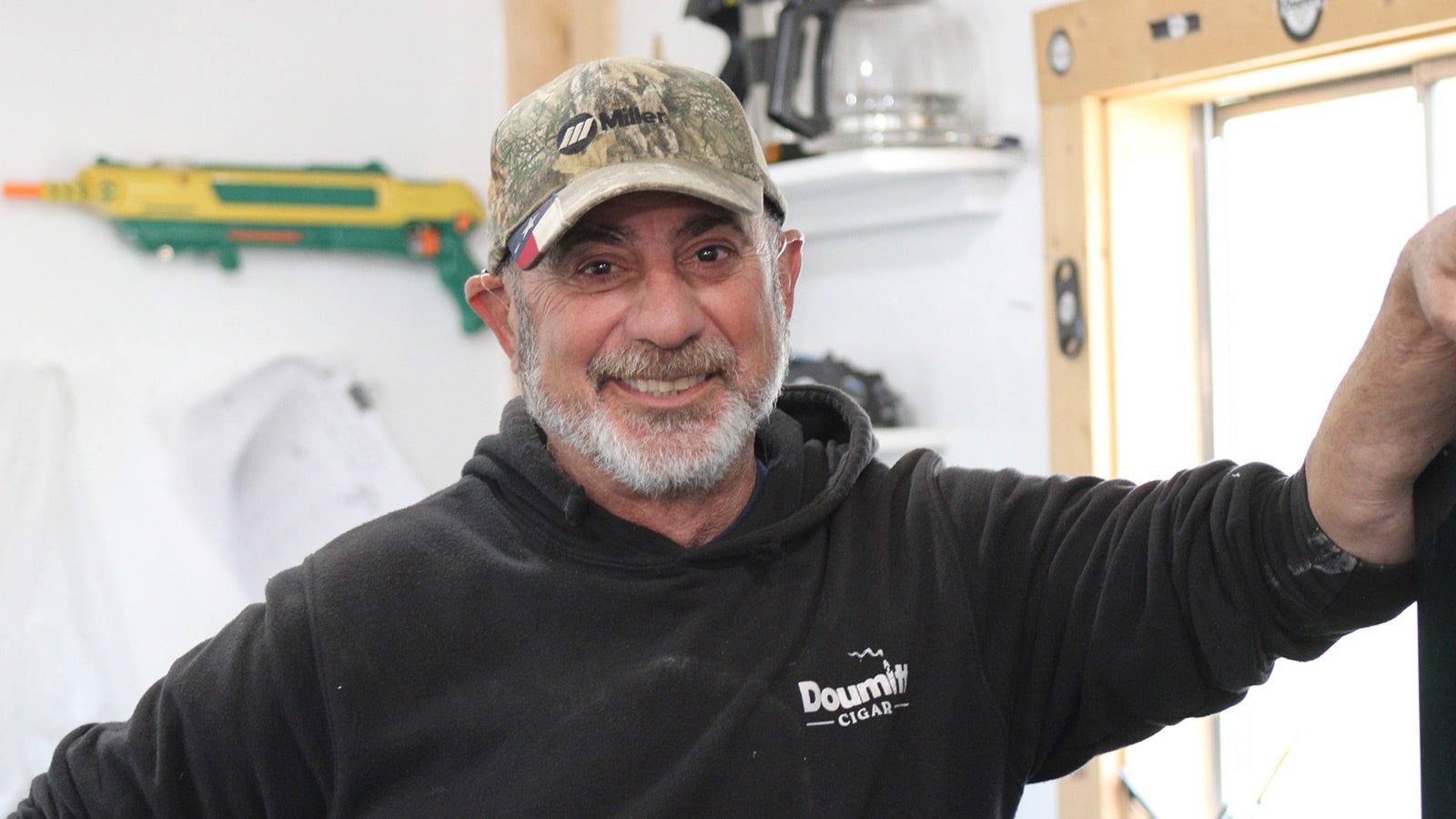Lists
From Two to One: Conjoined Twins’ Extraordinary Transformation into Independent Individuals

In the annals of medical marvels, the story of conjoined twins stands as a testament to both the resilience of the human spirit and the incredible advances in surgical techniques. Conjoined twins, also known as Siamese twins, are a rarity, occurring only once in every 189,000 births. These extraordinary individuals are physically and thus usually mentally connected, sharing some organs, and inevitably facing unique challenges.
One of the most renowned cases of conjoined twins is that of Chang and Eng, whose lives spanned the 19th century. Born in 1811 in Siam (now Thailand), the brothers became famous after embarking on a successful world tour. Chang unfortunately suffered a paralytic stroke while touring the United States in 1870, and four years later, both brothers passed away. An autopsy revealed that their livers, much like their sides, were conjoined.
While the historical account of Chang and Eng highlights the awe-inspiring nature of conjoined twins, more recent stories shed light on the remarkable progress achieved in separating such twins. What was previously considered impossible, ridding young twins of hope for a normal life, has now become a reality for several pairs, now individuals worldwide.
The marvels of modern medicine and technology, as well as the unprecedented expertise and medical skill of today’s doctors, have been able to completely transform the lives of those most unfortunate, condemned to a troubled existence through no fault of their own. The magnificent tale of human triumph over one of the most severe physical impairments in our species’ history began with understanding how it occurs in the first place.
Contents
The root of misfortune
The origins of conjoined twins lie in the early stages of pregnancy, during the formation of identical twins or the development of fraternal twins. Contrary to what most may deem logical while pondering the matter, not all twins have a risk of becoming conjoined.
Fraternal twins, also known as dizygotic twins, are produced through fertilization of two completely separate eggs by two different sperm during impregnation. Differing from identical twins, who share the same genetic material, fraternal twins have distinct genetic compositions, just like any other siblings. Consequently, the occurrence of conjoined twins cannot be attributed to the same genetic factors that give rise to fraternal twins.
On the other hand, the development of identical twins holds the key to understanding the origins of conjoined twins. Identical twins, also referred to as monozygotic twins, form when a single fertilized egg, known as a zygote, splits apart to create two separate embryos. This division usually happens within the first two weeks of embryonic development. However, if the zygote division is incomplete during this critical period, it can result in the formation of conjoined twins.
The exact cause of incomplete zygote division leading to the condition is still a subject of scientific investigation. There are two prevailing theories that attempt to explain this phenomenon. The first suggests that if the division occurs after two weeks of embryonic growth, it may result in the fusion of the developing embryos, leading to conjoined twins. The second proposes that the division process may not be complete, causing the embryos to remain partially connected.
Conjoined twins can be classified based on the point of attachment and the body parts they share. The main medical term used to refer to their condition is the suffix ‘-pagus,’ meaning ‘fixed’ in ancient Greek. The most common types include thoraco-omphalopagus, where the bodies are fused from the upper chest to the lower chest, and thoracopagus, where the fusion occurs from the upper chest to the pelvis. The severity of the connection can vary, from shared organs such as the liver or digestive system to more complex unions, such as fusion at the head (craniopagus).
Splitting life from itself – a daunting thought
The tragic history of conjoined twins bears great fame and suffering, with very little to no true respite for the sufferers of this condition. However, it isn’t for lack of trying that humanity had to let them suffer. Separating most conjoined twins who are currently alive is still impossible, considering the unimaginably complicated reconstruction process of vital body parts that would have to be replicated.
Conjoined twins are typically fused along the trunk of their bodies or at the front, side, or back of their heads, and in the case of symmetrical twins, they may have no birth anomalies apart from the areas of fusion. The very nature of their physical union creates complexities that demand specialized skills, equipment, and a multi-disciplinary medical team.
Another disheartening fact is that most sufferers of this condition will never even have a chance to apply for separation. Medical statistics reveal that only a small percentage, approximately 7.5% of conjoined twins survive more than a few days, and the chances are even less for those who share organs. These sobering figures emphasize the tremendous risks associated with their separation, prompting most doctors and sufferers to stray from the very idea of surgery.
Successful separation procedures require meticulous planning, extensive preparation, and careful consideration of each twin’s unique anatomy. The medical team must navigate the delicate balance between preserving vital organs, ensuring the well-being of each twin, and minimizing potential complications.
More often than not, the sheer amount of excruciating mental concentration required to perform what is nothing short of a medical miracle, even by today’s standards, proves too great for a team willing to attempt the procedure. Such a congregation of experts is rarely present in the same premises, and it’s even rarer that the twins or their loved ones are able to afford the surgery.
The few times that these unthinkably complex medical masterpieces take place serve as a beacon of hope and faith in humanity, proving that our race is truly capable of taming the nature of the world and ensuring our triumph for millennia to come.
Separating the conjoined
Opposing common sense and even the most reasonable expectations, the first recorded case of conjoined twin separation dates back to the Byzantine Empire in 10th century AD. Famous historian Leo the Deacon detailed in his opus magnum the appearance of male twins joined at the sides, ‘from the armpit to the hip.’
It was revealed from several other chronicles that they arrived in Constantinople (today’s Istanbul) all the way from present-day Armenia, while emperor Romanus I Lecapenus (919-944) was on the throne. The twins captivated everyone who had set eyes upon them, becoming the subject of many myths perpetuated by the diverse beliefs of the Byzantine capital’s inhabitants.
These grown men were of outstanding physical and mental health, embraced around the shoulders at the joined side and using the free hands to walk with two sticks. After being expelled from the city due to many believing they were a bad omen, they proceeded to travel around the empire and garner significant attention.
In the 950s one of them succumbed to an unrecorded ailment, but the other was still alive and well. Various skilled doctors gathered around the twins and took on the challenge of saving the other’s life, performing the first known separation surgery. In spite of their best efforts, the remaining twin died three days later.
In 1987, Dr. Benjamin Carson made medical history by being the first surgeon to successfully separate occipital craniopagus twins. He led a 70 member surgical team, in a 22 hour operation that became a model for future surgeries of this kind. #BlackHistoryMonth #nsgy pic.twitter.com/RQWG1Q9sf0
— Alvin Onyewuenyi MPH/22NEURO (@22neuroMD) February 10, 2020
Elisabet and Catherina were the first conjoined twins to undergo successful separation surgery, performed by the renowned German surgeon Johannes Fatio in 1689. However, aside from the fact that they survived, not much else is known about their state before or after the surgery.
A much better documented case, and arguably one of history’s most famous in this regard, is the 1955 procedure by neurosurgeon Harold Voris at Mercy Hospital in Chicago, Illinois USA, whereupon craniopagus twin girls had their heads separated from one another. Although they both survived, it was determined eight years later that the shorter sister suffered severe and permanent impairment.
John Nelson and James Edward Freeman (Johnny and Jimmy)
Born on 27 April 1956, in Youngstown, Ohio, Johnny and Jimmy entered the world as omphalopagus twins, sharing a liver while possessing separate hearts. Up until that point, it was quite possible to imagine separating conjoined twins who shared some skin and bones together, but not a vital organ.
They became a new world record guided by the skilled hands of Dr. Bertram Katz at North Side Hospital in their birthplace, undergoing ground-breaking separation surgery. The procedure was successfully executed, giving both boys a chance at a normal life previously thought outside the realm of possibility.
It no exaggeration to say that Bertram’s achievement opened a new door to the treatment of this debilitating condition, prompting numerous medical experts around the world to put their minds to the issue. Almost a century down the line, it’s evident that significant progress has been made in this field.
Ladan and Laleh Biljani
Despite being some of the most famous names within the umbrella of this particular birth defect, the lives of the Iranian conjoined twins tragically ended on the operating table. Instead, they’re a testament to just how difficult such procedures are to perform, and most definitely an inspiration to the doctors who came along in the years that followed, pushing themselves to the limit of human capability so as to avoid another pair of children suffering their fate.
Born with an extraordinary condition that saw them conjoined at the head – craniopagus – Ladan and Laleh Bijani became international figures, showcasing both the wonders of medical advancements and the inherent risks involved. Their desire for independence and the pursuit of individual lives led them to Raffles Hospital in Singapore, where renowned surgeons from around the world attempted to separate them.
Against the advice of the lead surgeon in 2003, the inseparable sisters underwent a grueling and indescribably complex 52-hour operation. The procedure sought to sever their shared blood supply to the brains – something never achieved before in the history of medicine. The world watched with bated breath, holding on to the hope that medical science had advanced just far enough to allow a miracle.
What perhaps exacerbates the tragedy to its utmost is the fact that the surgery almost succeeded, as the blood supply had been nearly entirely separated by the time Laleh Biljani’s heart stopped beating due to severe blood loss. Even with massive stocks of appropriate-type blood, the doctors just couldn’t supply enough to keep her alive. Ladan passed away shortly after her sister.
Bernardo and Arthur Lima
The seven surgeries performed on two three-year-olds from Brazil in 2022 are perhaps the greatest proof that Ladan and Laleh’s sacrifice changed the world for the better. The case of Bernardo and Arthur Lima was perhaps an even harder challenge for medical experts, as, unlike the Iranian twins, their brains were deeply fused within the conjoined skulls.
It doesn’t suffice to say that such a medical procedure is pretty much sci-fi, but it was still undertaken after careful deliberation of various experts. Doctors from Rio de Janeiro thought that perhaps something could be done for the boys, and they contacted one of the world’s leading children’s health facilities, the Great Ormond Street Hospital in London, England.
They brought the boys in and acted with strict adherence to every word of Ormond’s pediatric surgeon Noor ul Owase Jeelani, who guided his colleagues in one of the most fascinating medical achievements to date.
It wasn’t all going to be done in one attempt, however, and the boys had to be operated on seven different times, with the final two lasting a total of 33 hours and involving nearly 100 medical staff. The procedure was also guided by Dr Gabriel Mufarrej, who headed the hospital where it took place.
In order to even prepare for this practically unattainable achievement, the two experts consulted with one another for months leading up to the surgery, exploring various ideas in extremely accurate virtual reality models.
https://www.instagram.com/p/CgxtAdLssid/
It wasn’t just the doctors who made this possible though, as the entire operation was funded by Gemini Untwined, the world’s leading charity organization focused on the research and treatment of twins conjoined at the cranium.
The unprecedented success in Rio de Janeiro has now paved the way for many similar procedures, as the invaluable information of how something so complex had been successfully achieved for the first time in human history is widely available to all future doctors. The coming decades look brighter than ever for conjoined twins, and the world has their admirable resilience and the medical experts’ unwavering dedication to thank for that.
Lists
How is “90 Day Fiancé” Jorge Nava doing after prison?

It’s not uncommon for a popular reality TV personality to engage in acts that haven’t been thought through really well, but serving prison time isn’t what most would specify as customary in that line of work. Jorge Nava had the misfortune of finding out what it’s like to live behind bars, as opposed to in front of the camera lens.
It suffices to say that his life wasn’t easy prior to the conviction, and a lot of his troubles were, for better or for worse, documented in TLC’s “90 Day Fiancé.” While most of the couples in the series had at least somewhat of a wholesome story, the same can’t be said for Jorge Nava and Anfisa Arkipchenko, who at the time were 27 and 20 years old, respectively.
Although there isn’t any real evidence for this claim, many fans are certain that Jorge would’ve been much better off after the show had he had a less money-oriented partner. Without a doubt, Anfisa’s materialistic fascination left most wondering why Nava even tolerated such a greedy and vacuous personality in the first place. Thus, to understand what brought Jorge to court later on, it’s important to understand the story that pushed him towards such incidents.
Contents
An unlikely love story
Jorge and Anfisa never would’ve met, considering the fact that she’s from Russia, had he not noticed her revealing pictures on Facebook by accident. Arkipchenko was born on 4 September 1995, into a modest Russian family that had little to offer in the way of glamour and prestige – something she had her sights set on from early childhood.
Her luck would change for the better when someone who at least appeared wealthy took an interest in her physique, which would’ve been the Californian entrepreneur Jorge Nava. Although not exactly a millionaire by definition, Jorge was able to afford a semi-lavish lifestyle, having himself grown up in a relatively affluent family.
It’s unclear whether Nava was using his parents’ money to fund his relationships with women who shared Anfisa’s interests, but it can’t be denied that he was able to keep paying for the various wants and needs that his Russian bride-to-be would come up with. There was a limit, however, perhaps on the credit cards he was using.
As a result, Anfisa couldn’t exactly have every single thing she wanted, such as a $10,000 handbag. Jorge’s failure to provide her with this particular item caused a rift in their relationship, leading Arkipchenko to go back on the previously agreed plans, which was to come and live with him in the US.
Prior to settling down together, the two went on a costly vacation across Europe. It’s unknown how many pricey gifts Nava afforded Anfisa throughout that time, but his reluctance to buy the handbag made her cancel the couple’s remaining flights. She outright refused the idea of trying to reach a compromise, deciding instead to abandon the relationship and return to Russia.
Back together, and apart, and back together
Unsurprisingly to most fans, it didn’t take long for Anfisa to get bored of her same old rural Russian lifestyle, and she eventually found it in her heart – or perhaps her handbag – to forgive Jorge’s transgression of not spending exorbitant amounts of money on someone who isn’t even his wife. She let him know that he had another chance at giving up his wallet, and Nava was just happy that he could yet again use federal paper to make up for his other apparent deficiencies.
The two reunited, and Anfisa finally came to the US, at which point they were featured in “90 Day Fiancé.” Their presence in the show was chaotic, to say the least, with Anfisa’s behavior becoming so erratic at times that one had to wonder whether they were watching reality TV or a horror film.
Since Jorge had previously pleaded guilty to marijuana trafficking, most landlords found it unacceptable to rent him their property, soNava mostly lived out of hotels, and Anfisa really didn’t like that. She often criticized him for even the tiniest of issues, and Jorge’s mother, of course, found her son’s life to be unbearably stressful.
With the young Russian having nothing nice to say about Jorge’s family, and the feeling being mutual on the other side, it seemed for most of the series that Nava was the one holding everything together, taking his partner’s unnecessary aggression and his family’s excess worry upon his shoulders pretty much every single day.
Many viewers wondered how anyone at all would want to remain engaged to such an ungrateful and spoiled person as Anfisa, while Jorge simply tried to make the most out of any situation, constantly apologizing and complying with his fiancée’s almost every desire.
As Anfisa grew more and more tired with the fact that they couldn’t settle at a single location, she pushed further for Nava to obey her commands. There was another problem, however, and it was more of a psychological nature.
Due to Jorge’s wealthy appearance, as well as his tendency to flaunt his supposed wealth around, certain shady characters caught wind that he might have some cash laying around, eventually breaking into his old apartment and robbing him blind of all valuable possessions. Ever since then, he’d been extra cautious about keeping his life in just one permanent place, leading to an inconsistent hotel-to-hotel residency that was really getting on his future wife’s nerves.
Nava’s failure to fulfil every single wish that Anfisa would conjure up resulted in the Russian being quite unhappy, showing most of the time that she’s agitated with the simple fact that Jorge exists. Quite the opposite of love, some would say, but Jorge begged to differ.
He described her as a solid and stable individual whom he loved relying upon, explaining that he liked himself a strong woman who isn’t afraid to speak up. Naturally, there’s a limit to how ‘strong’ one should realistically be in a two-way relationship, but alas, only Nava knows what’s best for him, but obviously not!
Even with Jorge appreciating the way she treated him, Anfisa had been ready to leave him on numerous occasions. She threatened almost every single day that she would disappear from his life if he didn’t comply with this or that request, engaging in what most have called severe emotional manipulation.
In the end, Jorge would always succumb to her demands, allowing the young model wannabe to take whatever she wanted from him. It was never enough, however, and Anfisa’s behavior grew more violent and unreasonable by the episode.
Russian psycho
It was revealed by Jorge himself not too late into the relationship that Anfisa has been breaking phones that he spent a lot of money on, which was only one of the many ways the young Russian would relieve herself of aggression and other negative emotions. Without exception, her future husband and his wallet were the punching bags.
Jorge’s mother was understandably enraged with her son’s fiancé, directly accusing her of ‘spreading [her] legs’ whenever Jorge threw money at her. This caused the Russian to get up from her seat and leave the place where she met Mrs Nava, storming out in yet another rage, which Jorge alone would later suffer for.
#90DayFiance's Anfisa Nava is using body building to "fill the void" after her husband Jorge Nava's prison sentencing. https://t.co/dhvf5FTW3A pic.twitter.com/RPRZmQebHW
— E! News (@enews) December 11, 2018
Go away, but come back
Just like Jorge, fans more often than not had no idea how to make sense of what Anfisa was requesting, seeing as she would kick Jorge out of the small apartment that they eventually moved into, and then call him right back and scream because he isn’t home. The calls were torturous, to put it mildly, as no matter what Jorge said, it just wouldn’t be right, or enough.
It didn’t matter whether he complied with what Anfisa was asking, or simply opted for outright refusal, the young Russian’s reaction was just about the same every time, involving only more screaming and offensive language, all of which Jorge was absorbing like a sponge for the sake of their future marriage.
The aforementioned video shows the Russian calling him incessantly, and each time he would reply, she would just utter a single question and hang up. Nava described her as very controlling, detailing how she always had to know where he was, just to make sure that he wasn’t potentially spending his money on a different woman.
Even after Jorge promised that he would immediately come back, Anfisa kept screaming ‘NOW’ at the top of her lungs, screeching into the microphone until her throat gave out. Most fans took Nava’s side in the many conflicts that were seen throughout the show, agreeing with pretty much everything he had to say about his foreign fiancé.
The same clip also shows one of the few times Nava stood his ground, at which point he told her he wasn’t going to ruin his life just for her. Anfisa didn’t say anything at all, but instead actually slapped her future husband. Finally, the two are seen in a luxury store, where Anfisa is asking for a very expensive dress. Jorge admits that he doesn’t actually have $20,000 in cash that time around, to which Anfisa asks why he even brought her to the US in the first place.
Then, as per usual, right after they go home that day, Anfisa would wake up the next and demand more things, forgetting wholeheartedly that she ever questioned whether they should remain together, as long as Nava is open to making more purchases on her behalf.
https://www.instagram.com/p/BmlDb1Kgpra/
The fans believe it was exactly this behavior that eventually pushed Jorge to make more money than he could at the time, leaving him no other option but to engage in illegal activities, such as drug trafficking. In other words, it’s quite possible that Arkipchenko made Nava go back to his former illegal habits.
Too close to the sun
The consequences of Anfisa’s overwhelming requests culminated on 15 February 2018, when Jorge violated the basic rules of traffic, possibly from driving under great amounts of stress. It was soon revealed why he wasn’t having the most relaxed day behind the wheel, as the officers used their right to perform a routine search of the vehicle after making Nava pull over for an ID check.
His vehicle was stacked to the brim with marijuana, which is only legal for medical purposes in the place where he was halted – Mojave County, Arizona. There was no talking his way out of the fact that he intended to sell this stock to recreational users, which is a severe crime in the state. He was found in possession of 293lbs (133kgs) of marijuana, thus facing a potential prison term of over 25 years.
He was charged with possession and transportation of marijuana with the intent to sell, but subsequently released on $25,000 bail. That wasn’t the end of the ordeal, however, as he still had to face the court in due time. Nava found one of the best attorneys around, who managed to reduce his sentence from a class two felony charge to a class four one, thanks to another plea deal.
Good times, at last
In the end, Jorge ended up serving only two and a half years for a very serious law violation, which can almost be equated to coming out completely unscathed. Still, that wasn’t enough for Anfisa, and she later filed for divorce. The Russian then used her “90 Day Fiancé” fame to spread her name online, starting various social media profiles and a YouTube channel, all of which she is still steadily growing in mid-2023.
As for Jorge, he somehow lost over 128lbs (58kgs) in prison, and had something to look forward to upon coming out as well, as he started a relationship with actress Rhoda Blua soon after tasting freedom again. They ultimately married on 31 July 2022, four months after the birth of their second child, George, with their first, Zara, having been born in April 2021.
Unconfirmed sources claim that Jorge’s new net worth is somewhere around $1 million, suggesting that he’s doing very well for his family after giving up crime for good. Regardless of the verity of that claim, it’s been noted across media outlets that Nava and Blua seem to be well off, lacking for nothing in particular.
Lists
‘Perfect Match’ Cast Members Who Are Still Friends After The Show

Netflix, known for primarily financing documentaries, anime series, movies, and stand-ups, has also branched into producing and distributing reality TV series. Their dating series “Perfect Match,” produced by Kinetic Content and created by Chris Coelen, is becoming a leader in the genre. However, despite the name, only a few couples continued their romance after 12-hour-long episodes. We’ve studied which ones still nurtured their friendship after the finale aired on 28 February 2023.
Contents
- 1 The romance fizzled out in most cases
- 2 Dom Gabriel and Georgia Hassarati
- 3 Dom Gabriel and Ines Tazi
- 4 Dom Gabriel and Shayne Jansen
- 5 Dom Gabriel and Zay Wilson
- 6 Colony, Savannah, Diamond, and Anne Sophie
- 7 Chloe Veitch and Ines Tazi
- 8 Francesca Farago and Kariselle Snow
- 9 Kariselle Snow and Joey Sasso
- 10 Izzy Fairthorne and Georgia Hassarati
- 11 Zay Wilson and an unknown cast member
- 12 All romantic relationships failed
The romance fizzled out in most cases
Many participants admitted that the show gave them hope of continuing their romance after leaving. However, the five couples who matched in the end quickly discovered that their bond resulted from the isolation in the six-bedroom, five-bathroom house in Panama City, in a resort town named Playa Bonita.
The singles faced many obstacles after leaving, primarily the distance; they were from various parts of the USA, which was problematic enough. However, some were from Australia or Canada, or had family in Europe, such as Damian Powers, who was born in Germany. Moreover, some participants still had former partners they hadn’t get over, and had to return to their busy lives as, for example, TikTok creators, dancers, realtors, and athlete managers.
Dom Gabriel and Georgia Hassarati
Although Dom bonded with Georgia and left the house with her, their romantic relationship didn’t last long. The media called their break-up messy, but the couple claimed that distance was the primary reason – after all, he’s from Toronto, Canada, while she’s from Brisbane, Australia. They weren’t each other’s first choice; Dom initially connected with Francesca Farago. However, she eventually developed feelings for an old flame, Damian Powers, with whom she participated in “Love is Blind.” Luckily, George decided to give it another chance when he ran into Georgia on a date with Chase DeMoor, and she later matched with him. Their castmates recognized their connection, and the two won the first season of the dating reality TV series, meaning that expectations were high.
Sadly, the two slowly distanced romantically after the cameras turned off, citing the feeling that they were living in a bubble that finally burst. However, they both shared positive opinions of one another, calling each other ‘an amazing person’ and stating that they were on good terms and felt that their relationship made them stronger. It’s unclear how long they were a couple, and whether they spent time in person afterwards. Francesca claimed that Georgia broke up with him three days after filming, to date Harry Jowsey. In contrast, shortly after the show ended, Dom implied that they were together when she joined the “Georgia and Harry Jowsey Fall in Love” podcast.
'Perfect Match' star Francesca Farago hits back at Georgia Hassarati over Dom Gabriel relationship drama: 'The lies are insane' https://t.co/3Sc2TZbtqH
— Insider (@thisisinsider) March 14, 2023
Additionally, they both admitted to never redeeming their all-expenses-paid trip. Thankfully, they seemingly resolved their issues in time. They still follow each other on social media, and have shared screenshots of their chats, meaning they are in digital contact. Dom even said that if they meet again and the connection is strong, they would carry on and see where it goes.
Dom Gabriel and Ines Tazi
While Georgia moved on with Harry, Dom was connected to Ines Tazi afterwards for a good reason. She convinced him to stay in the Panama City house to see if he matched with anyone before he encountered Georgia. Although she had herself in mind and confessed her feelings in the house, Dom didn’t break things off with his girlfriend.
Moreover, after breaking up with Dom, Georgia accused them of flirting with Ines in the house on “The Viall Files” podcast. Despite those accusations and the fans ‘shipping’ the two after they posted many images and videos to social media, Ines and Dom didn’t start dating post-show, proving how strong their friendship’s is.
Dom Gabriel and Shayne Jansen
Unsurprisingly, many cast members of the same gender bond over the time they spend pursuing romance, and Shayne and Dom were great examples. Their bond was apparent during the filming, but grew in the real world. They call each other ‘besties’ and share a love of fitness, swings, and a particular clothing item—a crop top, calling themselves ‘crop top boys for life.’
Dom Gabriel and Zay Wilson
Dom also stayed on good terms with Zay Wilson, despite Zay’s early elimination, meaning they had very little time to connect. However, after Dom left, he read his fans’ comments. He filmed many TikTok videos with Zay, even acknowledging the requestion captioning a lip-syncing video of the Jonas Brothers’ song “Burnin’ Up” with, ‘Y’all demanded more Dom & Zay content!’
https://www.instagram.com/p/CpY2V_OM-Bs/
Colony, Savannah, Diamond, and Anne Sophie
Zay wasn’t the only cast member who went home early, and lost the opportunity to befriend with people given enough time. However, there were other reasons that viewers failed to see friendships develop. Some cast members made meaningful connections and potentially long-term bonds behind the scenes. Still, viewers never saw it because episodes were much edited, and had to follow exciting storylines. Diamond Jack revealed that she grew close to other women of color, Anne Sophie Petit-Frere, Colony Reeves and Savannah Palacio. Additionally, since she posted a video of them dancing and posing on 2 March 2022, she inadvertently revealed that they got together pretty early, perhaps even during the casting process. Whatever the timing, the ladies called themselves ‘the baddest girls in the house’, and even during the introduction, warned the others not to play with them.
Chloe Veitch and Ines Tazi
Ines had many failed matches in the show, and was unlucky in love with Shayne Jansen, who she presumably had to see a few times since they were both friends with Dom. However, she befriended Chloe Veitch, who Shayne left her for, and the two surprisingly remained close friends afterward. Although neither seemed interested in women, some fans thought that the two became engaged. That’s because Chloe posted their picture on a night out, with Ines putting a ring on her index finger, captioned, ‘I SAID YES!’ Ines took the joke further by commenting, ‘Wifeyyyy GOAL. Not one day can ever be dull with you in it!’ However, it was all good fun, and they merely celebrated their friendship.
Even more surprisingly, Chloe and Ines befriended Chloe’s ex-boyfriend’s ex-fiancé, Natalie Lee, who starred in “Love is Blind.” Natalie accused Shayne of signing up for the Panama show while they were still together, and the timing matches since the casting began in September 2021. However, although Chloe said that the casting directors chose Shayne because they thought that he was her ideal partner, the complicated history didn’t bother Chloe later.
Francesca Farago and Kariselle Snow
Francesca and Kariselle shared a tight bond in the show, and because they were openly bisexual, they even made out several times, despite having male matches. Although Kariselle’s match, Joey Sasso, saw nothing worrying with that behavior, it bothered Abbey Humphreys, with whom Francesca matched besides Dom.
However, they didn’t let those feelings affect their bond, and had each other’s back to the point of being called ‘a villain and her minion’ by Chase DeMoor and viewers online. People also speculated that they had been close before the show, because they posted pictures of themselves hugging at the Los Angeles Pride event during Pride Month, June 2022. However, they should have remembered that Netflix filmed the show in March of that year, meaning the two were in the real world for about two and a half months by then.
Kariselle Snow and Joey Sasso
Fans loved seeing the loving connection between Joey Sasso and Kariselle Snow, and the couple even became engaged when Joey proposed to her during the season finale. She said yes, but stipulating that he had to get her father’s approval. However, after the show, the couple was quiet about their relationship, and fans had to dig deep and analyze their activity for information. Kariselle posted a TikTok video on 3 March 2023, stating that she came home from Panama and had to inform friends that she was back with an ex-, whom she’d said she wouldn’t return to, but that they were also engaged. However, the video seemed like a skit, making fun of the complex situation she’d got herself into.
That brought light to a February 2023 interview Joey gave to Newsweek magazine. He said that they weren’t on the same page romantically, and went their separate ways in that regard, but are ‘seeing what life has in store for the future and that they feel like the divorced mom and dad of “Perfect Match.”‘ He added that he will always love and respect Kariselle and speak highly of her whenever he can, and Kariselle later said that they remain close friends who keep things civil.
Izzy Fairthorne and Georgia Hassarati
Georgia and Izzy have a history; they were cast members of the third season of “Too Hot To Handle.” Their connection deepened during their time in Panama, while independently searching for but failing to find their perfect match. During the podcast in which she accused her ex-boyfriend Dom of flirting with Ines Tazi, Georgia shared that she has much in common with Izzy, and that the two are great friends.
Zay Wilson and an unknown cast member
Zay Wilson attracted attention for being the first to arrive in the villa, and among the first to depart. As a reminder, Anne Sophie Petit-Frere chose bad boy Chase, but he felt that his perfect match wasn’t in Panama. However, in a TikTok video that he posted on 24 February 2023, he told his followers that he’d been dating someone from the show. However, he clarified that they are still working on moving past the close friends stage and would ‘be outside,’ i.e., go official, after a few more dates. Although he didn’t reveal who it was, viewers with a good memory recalled that he mentioned being interested in Savannah Palacio. We now know that she is close to Anne Sophie, and both women told their TikTok followers that Zay expressed romantic interest in Savannah in the villa. We have yet to see if the internet sleuths got it right. Also, it’s uncertain whether Zay and this mysterious individual will go public with their relationship, or just stay friends.
All romantic relationships failed
Of the five couples that left the show while still romantically involved, none stayed together in the real world, and one even broke-off their engagement. “Perfect Match” served as a social experiment, and its results were discouraging when it came to finding love.
However, most participants found friends they could spend time with and collaborate with, making their stay in Panama far from pointless. However, since the show went off the air recently, we have yet to see how long they can maintain the connection, especially when distance, their occupation, and romantic partners enter the picture.
Lists
What happened with Bear Brown’s assault case? Explained

Bear Brown is a reality TV personality, who gained fame as one of the stars of Discovery Channel’s hit show, “Alaskan Bush People.” The show follows the lives of the Brown family as they mostly live off the grid in the Alaskan wilderness. Bear’s colorful personality and wild antics have made him a fan favorite, but his personal life has also been the subject of much media scrutiny. Bear Brown faced domestic violence accusations from his wife, Raiven Adams in 2022, and was even arrested as a result. So, what exactly happened?
Contents
Who is Bear Brown?
Bear Brown was born on 10 December 1987, in Alaska, USA. His birth name is Solomon Isaiah Freedom Brown, however, he’s commonly known by his nickname “Bear,” which he has gone by since childhood. He grew up in the wilderness with his family, and learned how to live off the land at a young age. His father, Billy Brown, was the patriarch of the Brown family and the main star of the reality TV series “Alaskan Bush People.” However, Billy sadly passed away in 2021, due to a seizure.
Bear Brown is one of seven siblings, and has featured in the show since its debut in 2014. He’s known for his adventurous and daring personality, and has been involved in many of the family’s most exciting and sometimes dangerous exploits, such as hunting, fishing and building their own homes.
Bear has therefore gained a significant following on social media, on which he often shares updates about his life and adventures. He has over 300,000 followers on Instagram, posting photos and videos of his travels and wilderness experiences.
Bear Brown’s lifestyle is unique and unconventional, and he’s faced criticism from some who question the authenticity of his way of life. However, he remains committed to his family and their way of life, and has stated that he’s proud of the skills he learned during his upbringing.
Alaskan Bush People
“Alaskan Bush People” is a popular reality TV series that premiered on Discovery Channel in 2014. The show follows the lives of the Brown family, who live in the remote wilderness of Alaska and strive to live off the land. The family consisted of patriarch Billy Brown, his wife Ami, and their seven children – Matt, Bam Bam, Bear, Gabe, Noah, Snowbird and Rain.
The series has been successful due to its portrayal of the family’s unconventional lifestyle, which involves living without modern amenities such as electricity, running water and indoor plumbing. The Browns hunt, fish, and gather their own food, build their own shelters, and live in harmony with nature.
Throughout the series, the family has faced various challenges, including harsh weather conditions, health issues, and wildlife encounters. The show also highlights the Brown family’s close-knit relationship, as they work together to overcome these challenges and maintain their way of life.
Over the years, “Alaskan Bush People” has faced criticism for its questionable authenticity and portrayal of the Brown family’s lifestyle. Some critics have suggested that the show is scripted and that the family doesn’t truly live in the wilderness. However, the Brown family has defended the show and their way of life, stating that they’re proud of their lifestyle and the skills that they’ve learned.
Despite the controversy, “Alaskan Bush People” remains a popular reality TV series and has spawned multiple spin-offs, including “Alaskan Bush People: Bushcraft Chronicles” and “Alaskan Bush People: Off the Grid.” The show has garnered a dedicated fan base, drawn to the Brown family’s resilience, resourcefulness, and unique way of life.
Bear Brown love life and family
Bear Brown and Raiven Adams tied the knot in January 2022, after several years of an on-again-off-again relationship. The couple first met at Brown’s brother’s wedding which took place in 2018, for which Raiven’s mother was the wedding photographer. Raiven was helping her mother on the job, and felt an instant connection with Bear as soon as they met. They began dating shortly afterwards and announced their first engagement in 2019. However, rumors of a split soon emerged, but the couple eventually reconciled, and Bear proposed to Raiven again in September 2021.
https://www.instagram.com/p/CoNpi_qPTvn/
During the time they spent separated, their son was born in March of 2020, but the two had major, which resulted in Bear meeting his son only six months later. Raiven went as far as to file for sole custody of their child, while Bear fought for shared custody. In the end, they managed to resolve their dispute, with Raiven deciding to give Bear another chance.
Their wedding took place in an intimate ceremony attended by close family and friends, along with their one-and-a-half-year-old son, River. Bear and Raiven shared their excitement with fans on social media, posting pictures from their special day.
Bear Brown assault case. What happened?
Bear Brown made headlines in March 2022 when being arrested for domestic violence. The alleged incident occurred when allegdly Bear verbally and physically assaulted his wife Raiven in the trailer they were moving into.
According to Raiven’s account, Bear had been acting erratically and shouting, making her feel very unsafe. She locked herself in the trailer to get away from him, but Bear demanded to be let in and even asked her to retrieve items from the trailer as a way to talk to her. The next day, while Raiven was having a video call with her mother, Bear allegedly called her crazy and tried to take her phone away from her. Raiven claims that during the altercation, Bear put her on the ground and scratched her hand.
Although police officers couldn’t find any visible marks on Raiven’s body, aside from a scratch on her finger, Raiven alleges that Bear had pushed her several times. She also claimed that Bear’s actions constituted assault.
Video evidence from Raiven’s call with her mother allegedly shows her saying “pushing me down on the bed and taking my phone is an assault,” further supporting her claim.
Following Raiven’s report, Bear was taken into custody and placed in Okanogan County Jail, where he was charged with fourth-degree assault. He spent the weekend in jail before being released without bond.
Bear’s court date was set for April 26th, and he has since made a plea deal. The case has drawn significant attention from the media and fans of the reality TV show, with many expressing their disappointment and concern over the allegations of domestic violence.
Bear and Raiven’s relationship has been tumultuous in the past, with multiple break-ups and reconciliations. The incident has raised questions about the safety of the couple and their son, and their ability to maintain a healthy relationship, particularly given the high-profile nature of their status as reality TV stars.
The case is ongoing, and it remains to be seen what the outcome will be for Bear. Regardless of the legal proceedings, the incident serves as a reminder of the importance of addressing issues of domestic violence, and ensuring the safety and well-being of all individuals involved.
-

 Instagram Stars3 months ago
Instagram Stars3 months agoKatelyn Runck – Measurements, Height, Age. Plastic Surgery?
-

 Twitch Stars1 month ago
Twitch Stars1 month agoThe Sphere Hunter’s Biography: Trans? Age, Face, Real Name
-

 Actors6 months ago
Actors6 months agoWho is Dylan Llewellyn? Age, Height, Gay? – Biography
-

 Youtube Stars3 months ago
Youtube Stars3 months agoHow Rich is Judge Frank Caprio? Net Worth, Salary, Family, Bio
-

 Web Stars6 months ago
Web Stars6 months agoWho actually is Hard Rock Nick? Net Worth, Real Name – Wiki
-

 Businesspersons4 weeks ago
Businesspersons4 weeks agoThe Untold Truth Of Brandi Love’s Husband – Chris Potoski
-

 Celebrity Spouses2 months ago
Celebrity Spouses2 months agoThe Untold Truth Of Rashida Tlaib’s Husband – Fayez Tlaib
-

 Instagram Stars4 weeks ago
Instagram Stars4 weeks agoThe naked truth of Claire Abbott’s disappearance: Where is she now?










































